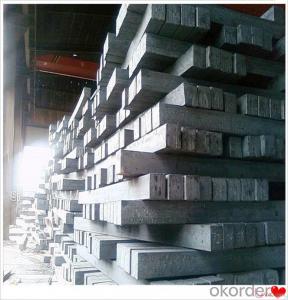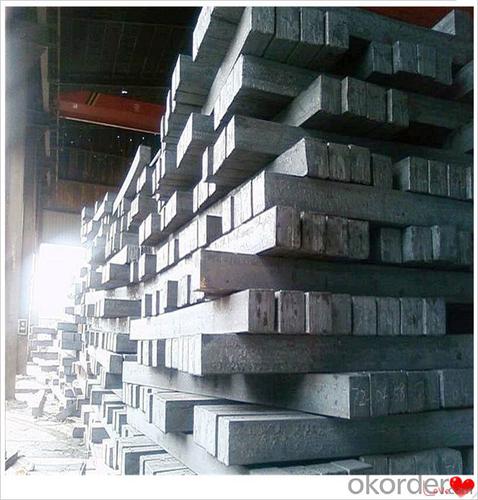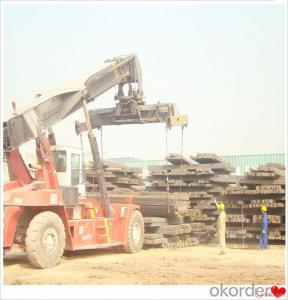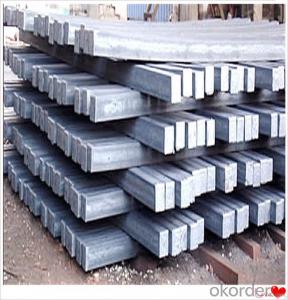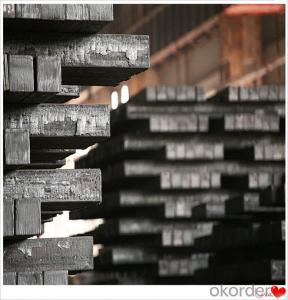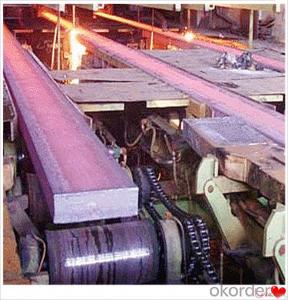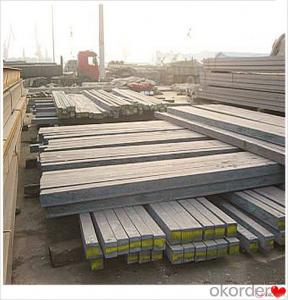Steel Billet Manufacturers Q235,Q255,Q275,Q345,3SP,5SP,20MnSi
- Loading Port:
- China main port
- Payment Terms:
- TT OR LC
- Min Order Qty:
- 20 m.t.
- Supply Capability:
- 200000 m.t./month
OKorder Service Pledge
OKorder Financial Service
You Might Also Like
Steel Billet Manufacturers Q235,Q255,Q275,Q345,3SP,5SP,20MnSi
Specification
Steel billet(ingot) by cogging or breakdown of semi-finished products, is the raw material of all kinds of steel mill. Billet section of square, round, flat, rectangular and abnormity of several kinds of, mainly related to the shape of rolled products.
CNBM Q235,Q275,Q345,3SP,5SP,20MnSi Billets Steel
Hot Rolled Steel Billets/ Mild Steel Bar/ Billet Steel
Specification (see below)
Standard: GB/JIS/ASTM
Size: 50*50mm-180*180mm
Length: 3-12mtrs or Customised
Steel material: Q235,Q255,Q275,Q345,3SP,5SP,20MnSi
Technique: Hot rolled
FOB Unit Ton Price $250-350 and Usually I will quote you CFR price.
MOQ: Usually 1000-10000MT/size
Shipment:By Container,Bulk Vessel
Packaging Details: bundles with steel strips or as customers's requirements
Delivery time: Usually within 30 days after the deposit/LC
Inspection:Third party inspection before loading.
Technical data
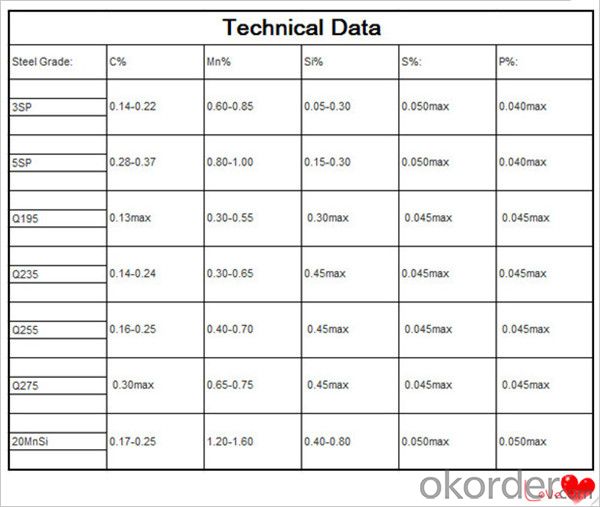
Feature Steel Billet
Rectangular billet continuous casting billet and mainly general carbon steel, low carbon low silicon cold-rolled material, high quality carbon structural steel, high strength low alloy steel, special steel, etc.
The billet is mainly divided into two kinds from the shape:
Slab: cross section width and height of the ratio of the larger, mainly used for rolling plate.
Billet: equal cross section width and height, or a huge difference, mainly used for rolling steel, wire rod. ,
Steel billets have distinct characteristics as compared with already furnished steel bars and products. Billets have a specific grain structure, which enables the metal to be processed more intricately. Steel billets are also known for their malleability and ductility, especially when exposed to varying temperatures during shaping and molding.
Packaging & Shipping
1. Packaging:
1) Small size: in bundles
2)Big size: in bulk
3)in plastic packing or as per customer requirement
2. Delivery time:
1) Normal size: within 7days send from warehouse directly
2) Special size: with 25-30days customer made for you
3. Trade terms:FOB/CFR/CIF
4. Shippment:
1) length:≤5.8m loaded in 20FT Container with 25-27tons
2) length:≤11.8m loaded in 40FT Container with 25-27tons
3) lengnth:≥12m shipped by bulk vessel, FILO terms
Steel Billet Images
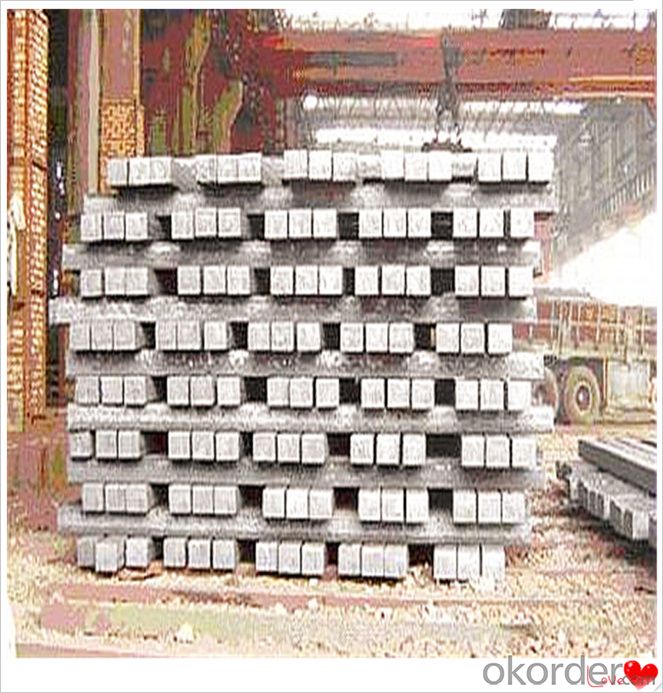
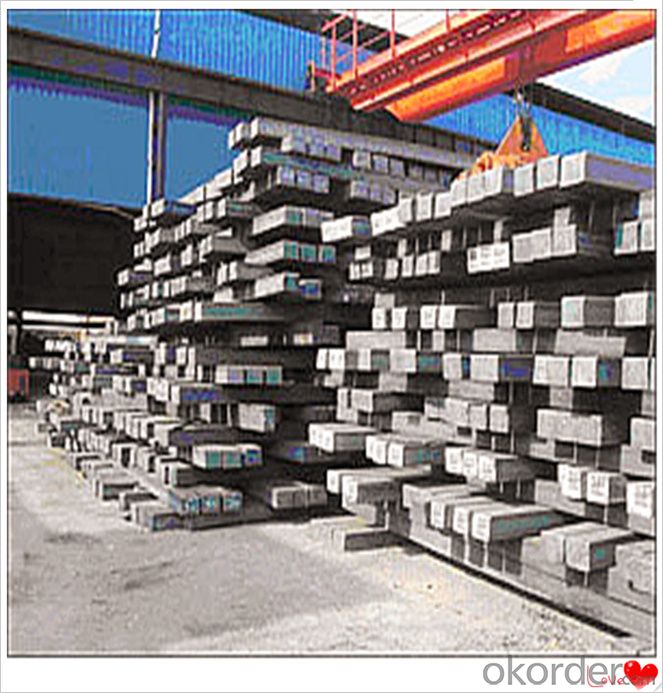
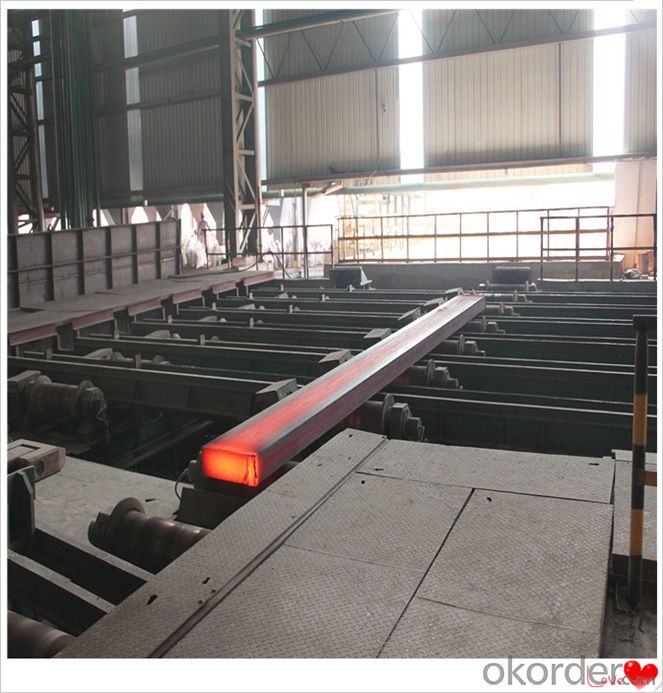
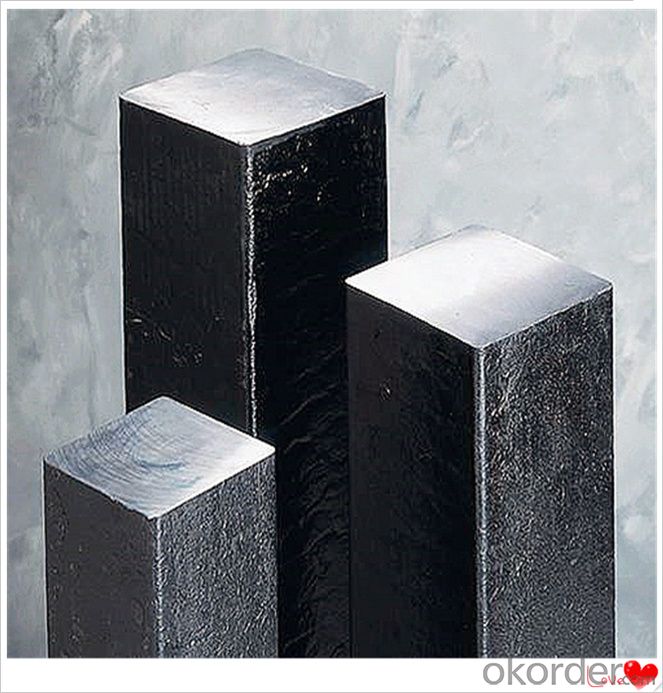
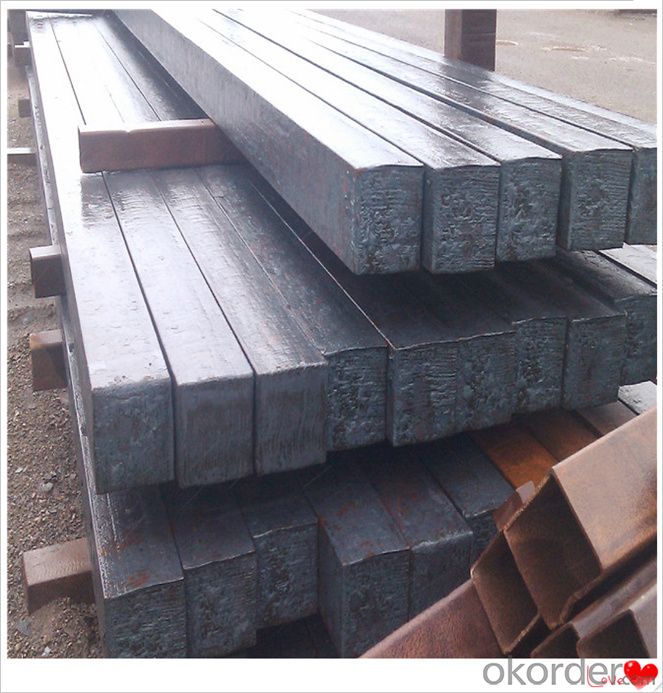
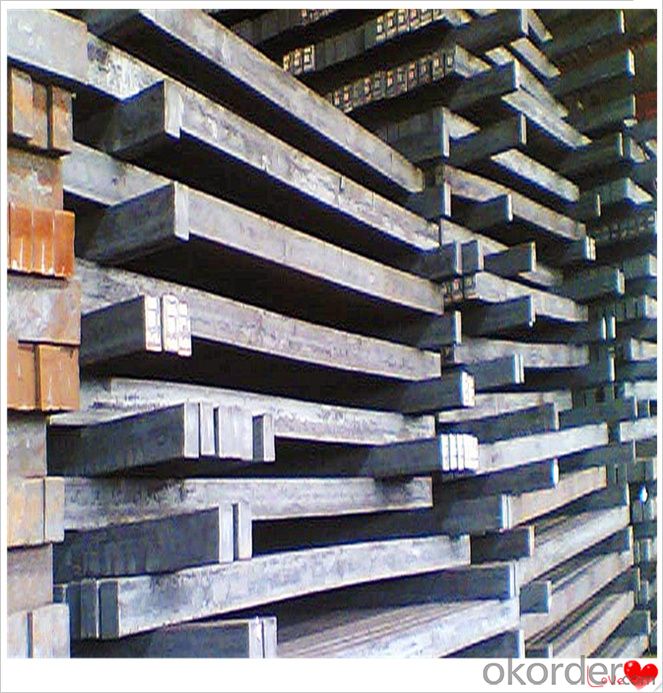
Processing
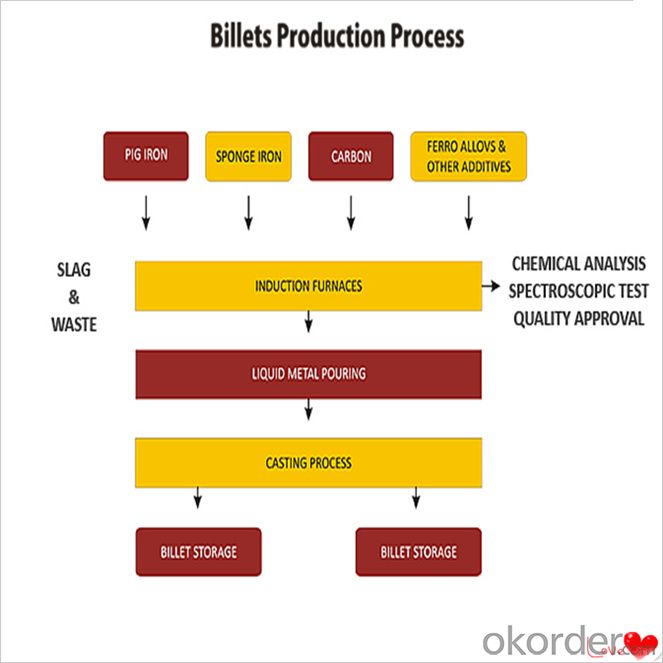
Usage-Billet Steel
Used for the plant, the bridge,shipment building high-rise building construction,lifting and transportation machinery, equipment manufracturing base building the support foundation pile manufacturing.
Billets, or ingots (as they sometimes referred to), are not of practical use until they have been formed into more functional shapes and sizes. While they have already been put in the furnace, they still require a series of shaping and molding procedures such as hot and cold working, milling and cutting before they are sold in hardware stores, or used for different applications. The unformed billets, however, can be used in striking currency such as coins and as reserves, similar to gold bars.
FAQ-Billet Steel
We have organized several common questions for our clients,may help you sincerely:
1) How about your company?
A world class manufacturer & supplier of castings forging in carbon steel and alloy steel,is one of the large-scale professional investment casting production bases in China,consisting of both casting foundry forging and machining factory. Annually more than 8000 tons Precision casting and forging parts are exported to markets in Europe,America and Japan. OEM casting and forging service available according to customer’s requirements.
2) How to guarantee the quality of the products?
We have established the international advanced quality management system,every link from raw material to final product we have strict quality test;We resolutely put an end to unqualified products flowing into the market. At the same time, we will provide necessary follow-up service assurance.
3) How long can we receive the product after purchase?
In the purchase of product within three working days, We will arrange the factory delivery as soon as possible. The pecific time of receiving is related to the state and position of customers.Commonly 7 to 10 working days can be served.
4)Do you have your own QC department?
Yes, we have, our QC department will inspect the goods during the process of mass production and after completion of production.
hot sale!!! Cast Steel Grades/ mild steel bar/ billet steel
(1): High quality steel with reasonable price.
(2): Wide excellent experiences with after-sale service.
(3): Every process will be checked by responsible QC which insures every product's quality.
(4): Professional packing teams which keep every packing safely.
(5): Trial order can be done in one week.
(6): Samples can be provided as your requirements.
- Q: How do steel billets contribute to the manufacturing of automotive parts?
- The manufacturing of automotive parts heavily relies on steel billets, as they serve as the primary raw material for various components. Steel billets possess excellent strength, durability, and malleability properties, making them indispensable for automotive manufacturers. To begin with, steel billets play a crucial role in the production of engine parts such as crankshafts, connecting rods, and camshafts. These components demand high strength and precision, which can be achieved by utilizing steel billets as the initial material. By heating, forging, and machining the billets, they are shaped into the desired form, ensuring the necessary strength and accuracy for optimal engine performance. Furthermore, suspension and chassis components also heavily rely on steel billets. Control arms, axles, and frame sections necessitate exceptional toughness and resistance to endure the constant stresses and strains experienced by vehicles. Steel billets provide the required mechanical properties to guarantee the safety and longevity of these vital automotive components. In addition, various transmission and drivetrain parts are manufactured using steel billets. Gears, shafts, and differential components require outstanding wear resistance, strength, and dimensional accuracy to ensure the efficiency and reliability of the vehicle's power transmission system. Through forging and machining, steel billets are transformed into these parts, meeting the rigorous standards set by the automotive industry. Moreover, steel billets contribute to the production of body and exterior components such as doors, hoods, fenders, and frames. These parts necessitate high strength, corrosion resistance, and the ability to be shaped into complex forms. Steel billets can be hot or cold rolled, pressed, stamped, or welded to produce these components, providing the necessary structural integrity and aesthetics for automotive bodies. In conclusion, the superior mechanical properties and versatility of steel billets make them vital in the manufacturing of automotive parts. They enable the production of high-quality, durable, and reliable components that meet the demanding requirements of the automotive industry. The use of steel billets ensures the safety, performance, and longevity of vehicles, contributing to the overall quality of the automotive manufacturing process.
- Q: What are the common defects found in steel billets?
- There are several common defects that can be found in steel billets. These defects can occur during the manufacturing process or due to external factors. One common defect is surface cracks, which can occur due to improper cooling, handling, or excessive stress during rolling or forming. These cracks can weaken the billet and affect its overall strength and integrity. Another common defect is internal voids or inclusions, which can occur due to the presence of impurities or foreign particles in the steel. These voids can create weak spots in the billet and can lead to structural failures or reduced mechanical properties. Misalignment or misshaping is another defect that can occur during the cooling or forming process. This defect can result in uneven thickness or dimensions, which can compromise the billet's performance and suitability for its intended application. In addition, excessive segregation of alloying elements can occur, leading to uneven distribution of properties within the billet. This can result in inconsistent mechanical properties and reduced overall quality. Lastly, surface defects such as scale, pitting, or surface imperfections can also be found in steel billets. These defects can occur due to improper handling, storage, or exposure to harsh environments. While these defects may not affect the structural integrity of the billet, they can impact the surface finish and aesthetics of the final product. Overall, it is essential to identify and address these common defects in steel billets to ensure the production of high-quality and reliable steel products. Regular inspections, quality control measures, and proper handling and storage techniques can help minimize and prevent these defects.
- Q: How do steel billets contribute to the overall thermal insulation of a structure?
- Steel billets do not contribute directly to the overall thermal insulation of a structure. Thermal insulation is primarily achieved through the use of materials with low thermal conductivity, such as insulation boards or panels made from materials like fiberglass, foam, or mineral wool. Steel billets, on the other hand, are typically used as a raw material in the construction industry for various applications, such as the production of steel beams, columns, and other structural components. These components, when properly integrated into a building's structure, can indirectly contribute to the overall thermal insulation of a structure. For instance, steel beams and columns can help support and distribute the load of insulation materials, ensuring they remain in place and perform their insulating function effectively. Additionally, steel components can be designed to minimize thermal bridging, which is the transfer of heat between materials with different thermal conductivities. By reducing thermal bridging, steel components can help maintain a more uniform temperature throughout the structure and prevent heat loss or gain at these junctions. However, it is important to note that the primary role of steel billets in a structure is not thermal insulation. Instead, they provide structural stability, durability, and strength to the building. To achieve optimal thermal insulation, additional materials and construction techniques specifically designed for insulation purposes should be used in conjunction with steel components.
- Q: How are steel billets distributed in the market?
- Various channels and processes are utilized to distribute steel billets in the market. These channels can be broadly classified into three main methods: direct sales, distribution networks, and online platforms. Direct sales refer to the direct selling of steel billets by manufacturers or steel mills to customers, such as construction companies, fabricators, or steel service centers. This method allows manufacturers to maintain better control over pricing, quality, and delivery schedules. It also enables them to establish direct relationships with customers and gain insight into their specific requirements. Distribution networks play a significant role in the distribution of steel billets. These networks consist of wholesalers, distributors, and stockists who purchase steel billets from manufacturers and sell them to end-users or smaller retailers. Distribution networks have extensive market coverage, enabling them to serve a wide geographical area. They provide convenience to customers by maintaining an inventory of steel billets, ensuring timely availability, and reducing lead times. In recent years, online platforms have become a popular means of distributing steel billets. These platforms connect buyers and sellers of steel billets, facilitating efficient and convenient business transactions. Manufacturers can reach a global customer base through online platforms, while buyers have access to a wide range of suppliers and can compare prices and specifications. Online platforms also promote transparency and reduce the reliance on intermediaries, resulting in cost savings. Regardless of the distribution method, the transportation and storage logistics of steel billets are crucial. Steel billets are typically transported in bulk using various modes of transportation, such as trucks, trains, or ships. To ensure the quality and integrity of the billets, proper storage facilities equipped with cranes and heavy-duty machinery, such as warehouses or yards, are necessary. Overall, the distribution of steel billets involves a complex network of manufacturers, distributors, and online platforms working together to meet the diverse needs of customers. This ensures a consistent supply of steel billets in the market, supporting industries such as construction, manufacturing, and infrastructure development.
- Q: How are steel billets used in the production of pipe fittings?
- Steel billets are used in the production of pipe fittings as the starting material. These billets are heated and then shaped into the desired form through processes like forging, machining, or casting, to create the various types of pipe fittings such as elbows, tees, and reducers. The steel billets provide the necessary strength and durability required for pipe fittings to withstand high pressures and temperatures in plumbing and industrial applications.
- Q: How are steel billets used in the production of automotive frames?
- Steel billets are used in the production of automotive frames as a primary raw material. Billets are essentially long, rectangular-shaped pieces of steel that are heated and then formed into specific shapes through various manufacturing processes. In the case of automotive frames, these billets are typically heated and then passed through a series of dies and rollers to form the desired shape and dimensions. Once the billets are formed into the appropriate shape, they are further processed through cutting, bending, and welding techniques to create the intricate and sturdy structure of an automotive frame. The use of steel billets in the production of automotive frames is preferred due to the high strength and durability properties of steel, which are crucial for ensuring the safety and structural integrity of the vehicles. Moreover, steel billets offer excellent formability and machinability, allowing manufacturers to create complex frame designs that meet the specific requirements of different vehicle models. Additionally, steel is a cost-effective material, making it a popular choice for mass production in the automotive industry. Overall, steel billets play a vital role in the production of automotive frames by providing a strong and reliable foundation for the vehicle's structure. The use of these raw materials, along with advanced manufacturing techniques, ensures that automotive frames are able to withstand various forces and impacts, ultimately contributing to the overall safety and performance of the vehicles.
- Q: How do steel billets contribute to the overall fire resistance of a structure?
- The overall fire resistance of a structure is enhanced by steel billets in several ways. Firstly, steel billets are made of a non-combustible material, meaning they cannot burn or aid in the spread of fire. By incorporating steel billets into a building's construction, the risk of fire propagation is significantly reduced. Secondly, steel possesses a high melting point, typically around 1370 degrees Celsius. This characteristic enables steel to maintain its structural integrity and resist deformation even under intense heat. By using solid steel blocks, known as steel billets, the structure gains strength and stability that can withstand the impact of a fire. Moreover, steel exhibits low thermal conductivity, resulting in poor heat conduction. This property helps to slow down the transfer of heat from the fire to the surrounding areas of the structure. By acting as a barrier, steel billets hinder rapid temperature rise, allowing occupants more time to evacuate and firefighters more time to extinguish the fire. Furthermore, steel billets are frequently utilized in constructing fire-resistant walls or barriers within a structure. These walls are designed to compartmentalize the building, confining the spread of fire and smoke to specific areas. By incorporating steel billets into these fire-resistant walls, the overall construction becomes more durable and capable of enduring the extreme conditions of a fire. In conclusion, steel billets play a crucial role in enhancing the overall fire resistance of a structure due to their non-combustible nature, high melting point, low thermal conductivity, and ability to reinforce fire-resistant walls. By incorporating steel billets into the construction process, buildings can achieve greater resilience against fire incidents, ensuring the safety of occupants and minimizing fire damage.
- Q: How do steel billets contribute to the overall aesthetics of a structure?
- Steel billets, which are essentially semi-finished steel products, play a significant role in enhancing the overall aesthetics of a structure. While their primary purpose is to provide strength and support, their visual appeal should not be underestimated. First and foremost, steel billets are responsible for the creation of various architectural elements, such as columns, beams, and decorative features. These elements not only serve structural purposes but also contribute to the overall aesthetics of the building. The clean lines and sleek appearance of steel billets can give a modern and contemporary feel to the structure, adding a touch of sophistication and elegance. Moreover, steel billets can be manipulated and shaped into intricate designs and patterns, making them highly versatile in terms of aesthetics. Whether it is a grand entrance gate, a unique staircase railing, or an ornate decorative panel, steel billets can be molded and fabricated to create visually appealing and eye-catching features that enhance the overall charm of the structure. Furthermore, steel billets can be finished with various coatings, such as paint, powder coating, or galvanization, which not only provide protection against corrosion but also contribute to the aesthetic appeal. These finishes allow for customization, as they can be chosen to complement the overall design and color scheme of the structure, creating a cohesive and visually pleasing look. In addition, steel billets can be used in combination with other materials, such as glass or wood, to create stunning architectural features. The contrast between the strength and rigidity of steel and the transparency or warmth of other materials can create a visually striking effect, adding depth and interest to the structure's design. Lastly, steel billets offer a sense of durability and timelessness to the structure. The inherent strength and resilience of steel give the impression of solidity and longevity, which are essential factors in creating an aesthetically pleasing building. The sleek and modern appearance of steel billets can also evoke a sense of progress and innovation, enhancing the overall aesthetic appeal of the structure. In conclusion, steel billets contribute to the overall aesthetics of a structure by providing structural support, allowing for intricate designs, offering customization options, creating contrasts with other materials, and conveying a sense of durability and timelessness. Their visual appeal, along with their strength and versatility, makes steel billets an essential component in creating an aesthetically appealing and architecturally pleasing structure.
- Q: What are the main factors affecting the machinability of steel billets?
- The machinability of steel billets, which refers to the ease with which they can be cut and shaped by machining processes, is influenced by several key factors. These factors include the composition of the steel, its microstructure, the presence of impurities or inclusions, and the mechanical properties of the material. The composition of the steel plays a crucial role in determining its machinability. Elements such as carbon, manganese, sulfur, and phosphorus can significantly affect the cutting performance. For instance, higher carbon content can increase hardness, making the steel more difficult to machine. On the other hand, manganese can improve machinability by enhancing the formation of a favorable microstructure. The microstructure of the steel, which is influenced by factors such as heat treatment and alloying elements, also affects machinability. Fine-grained steels with a homogeneous microstructure are generally easier to machine than coarse-grained ones. Additionally, the presence of alloying elements like chromium or molybdenum can improve machinability by enhancing the material's hardness and wear resistance. Impurities or inclusions in the steel, such as non-metallic particles or oxides, can have a detrimental effect on machinability. These impurities can cause tool wear, surface defects, and poor chip formation during machining. Therefore, the level of impurities in the steel should be minimized through careful production and refining processes. Furthermore, the mechanical properties of the steel, including its hardness, strength, and ductility, influence machinability. High-strength steels are typically more challenging to machine due to their increased hardness, which requires more cutting force. Ductility is also crucial as it affects the ability of the steel to form chips during machining. A balance between hardness and ductility is desirable for optimal machinability. In conclusion, the machinability of steel billets is determined by various factors, including composition, microstructure, impurities, and mechanical properties. Understanding and controlling these factors is essential for ensuring efficient and effective machining processes.
- Q: How are steel billets used in the manufacturing of machine parts?
- Steel billets are an essential raw material in the manufacturing of machine parts. These billets are solid, semi-finished steel products that are cast into specific shapes and sizes. The process of using steel billets involves various stages. Firstly, the steel billets are heated in a furnace to a specific temperature, which softens the metal and makes it more malleable. Once the billets reach the desired temperature, they are ready for further processing. Next, the heated billets are transferred to a rolling mill, where they undergo a process called hot rolling. In this process, the billets are passed through a series of rollers, which apply pressure and shape them into desired forms such as bars, rods, or sheets. The hot rolling process ensures that the steel billets achieve the required dimensions and surface finish. After hot rolling, the shaped steel billets are further processed through different techniques such as cutting, forging, or machining to fabricate machine parts. These parts can include gears, shafts, valves, or any other component required for machinery. The use of steel billets in the manufacturing of machine parts offers several advantages. Firstly, steel billets are known for their high strength and durability, making them ideal for producing parts that can withstand heavy loads and harsh operating conditions. Additionally, the malleability of steel billets allows for the creation of intricate shapes and designs, ensuring the production of complex machine parts. Moreover, steel billets can be easily customized to meet specific requirements. They can be alloyed with other metals or undergo various heat treatments to enhance their properties such as hardness, corrosion resistance, or wear resistance. This versatility of steel billets makes them suitable for a wide range of machine parts across different industries. In conclusion, steel billets play a crucial role in the manufacturing of machine parts. Through processes such as hot rolling, cutting, forging, and machining, steel billets are transformed into various shapes and sizes to create durable and high-quality components for machinery. The versatility and strength of steel billets make them an indispensable raw material in the manufacturing industry.
Send your message to us
Steel Billet Manufacturers Q235,Q255,Q275,Q345,3SP,5SP,20MnSi
- Loading Port:
- China main port
- Payment Terms:
- TT OR LC
- Min Order Qty:
- 20 m.t.
- Supply Capability:
- 200000 m.t./month
OKorder Service Pledge
OKorder Financial Service
Similar products
Hot products
Hot Searches
Related keywords
